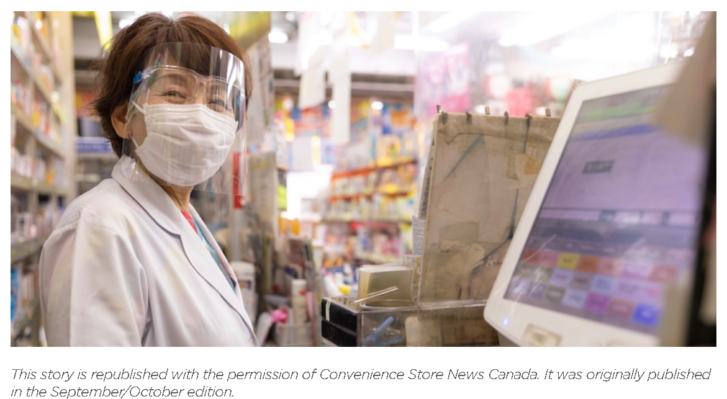Our nostalgia for life before COVID-19 may already be painting the pre-pandemic world as a simpler, safer place, but it’s not a place we can ever return to. “And that’s not a bad thing,” says Pam Patry, WSPS’ Acting Pandemic Program Lead, Field Operations. “Everything we’ve learned through the pandemic can help us create safer in-store experiences for employees and customers.”

Here’s what we’ve learned so far:
- Viruses like COVID-19 may die out or survive indefinitely. SARS disappeared with little human intervention. However, other viruses continue circulating. Since the COVID-19 pandemic could become endemic — occurring regularly but at low levels of infection— we may need to continue minimizing the risk of transmission for years.
- COVID-19 vaccinations are a key tool, but not a cure-all. They may be a person’s best defence against the virus, but vaccinated people can still contract and spread it.
- We’ll never vaccinate everybody. Since much of the world remains partially vaccinated or unvaccinated, more infectious variants may emerge, such as Lambda.
Here’s what we can draw from this:
- A post-vaccination world isn’t necessarily a post-pandemic world. COVID-19 precautions may be with us for a while.
- These precautions work. They can even keep us healthier. A link exists between COVID-19 precautions and declining infection rates for influenza, the common cold, and childhood illnesses such as chickenpox and measles.
What does this mean for employees and customers? “The risk of transmission may be lower,” says Pam, “but people may still be required to wear face coverings, regularly wash or sanitize their hands, conduct transactions through plexiglass barriers, and so on.”
How to survive and thrive in this post-vaccination world
For employers, surviving and thriving means taking a longer view by integrating short-term COVID-19 measures into longer term health and safety practices.
Pam’s number one recommendation is to create a COVID-19 safety plan if you haven’t already. The plan documents what your workplace needs to do to prevent transmission, and how to do it. It’s also a legal requirement.
Pam also offers these suggestions:
- Keep up with evolving COVID-19 requirements. Update your safety plan as needed and communicate changes to employees and customers.
- Follow evolving provincial and public health requirements. Any changes may indicate opportunities for improvement in your workplace.
- Continue posting and enforcing COVID-19 precautions before customers and suppliers enter. Highlight any changes in precautions.
- Maintain hand sanitation stations close to entrances, and ensure they stay tidy, functional and visible.
- Enforce capacity limits so long as they remain a requirement. A crowded store may deter customers from entering.
- Be vigilant with housekeeping. A store that looks, feels and smells clean will reassure customers that you’re on top of the situation, regardless of what it is.
- Consider keeping plexiglass barriers in place even if they are no longer required. They protect employees and customers from COVID-19 and could help protect everyone from other hazards.
- Be on guard against COVID-related anger. We saw it early on in the pandemic and it could flare again. Ensure your security systems — panic buttons, cameras, alarms — are working properly. Train employees on how to recognize threats, defuse potential conflict, and activate assistance.
- Be mindful of other potential hazards, such as slips, trips and falls, repetitive strain, and unsafe or excessive lifting.
Pam’s final words: “As we enter a post-vaccination world, take time to review, assess and improve health and safety practices. They will help you keep everyone safe, sustain important relationships, and ensure your business continues operating efficiently.”
Article From: WSPS

